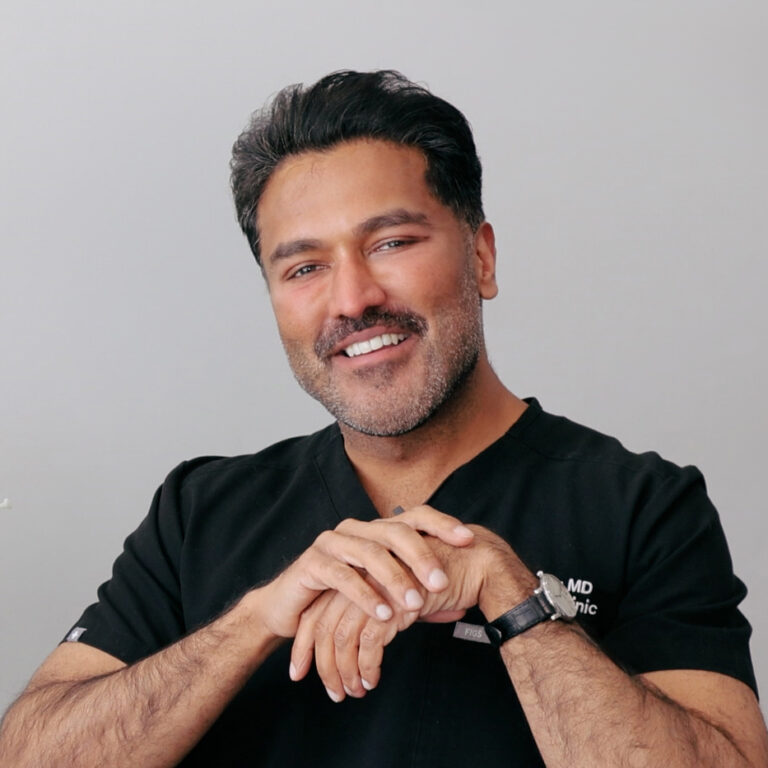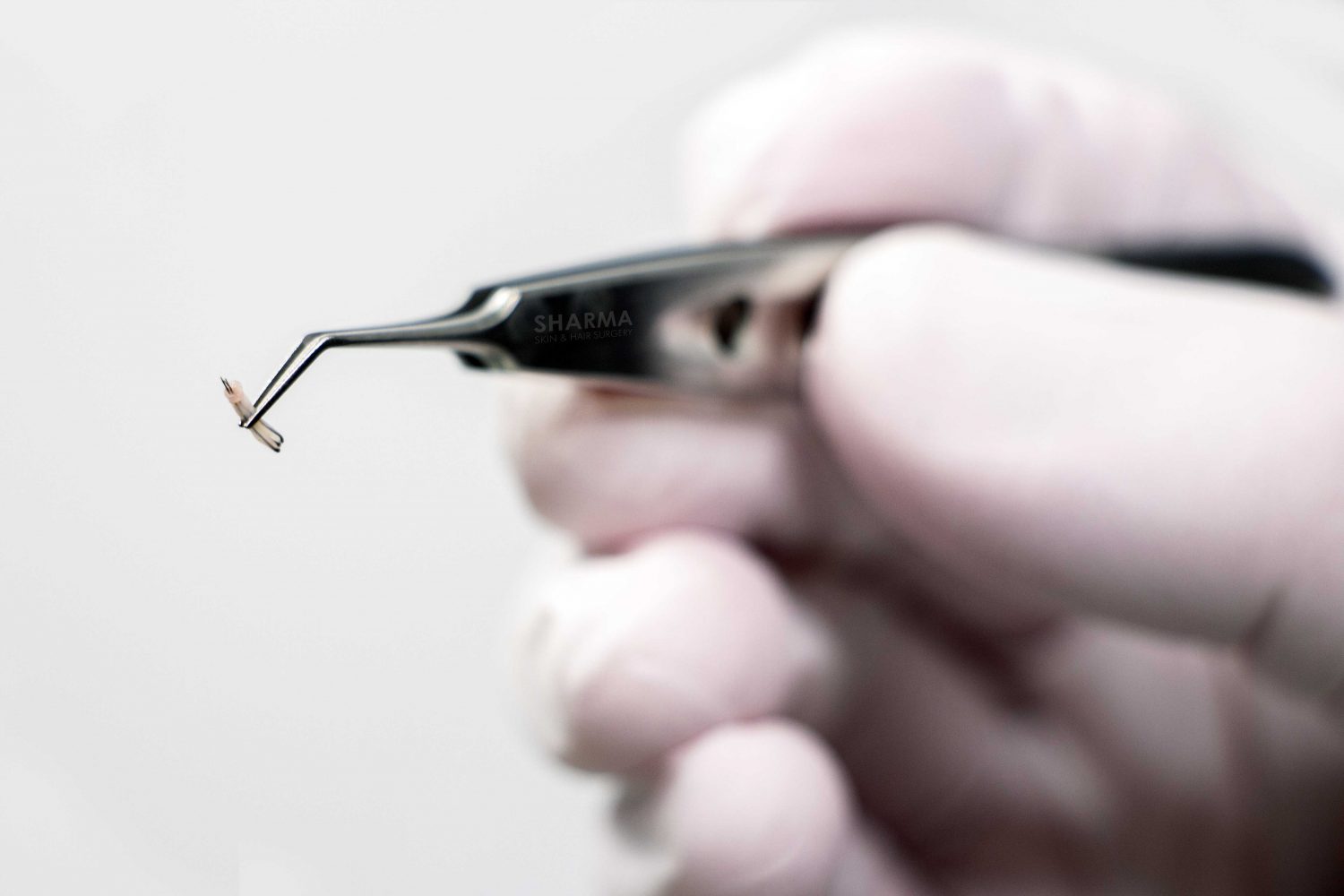What is used to make each incision?
Each patient will require a different sized blade for their incisions based on a few factors. Graft thickness, quality, spacing, and straightness. To promote the best healing Dr. Sharma will attempt to use the smallest blade possible. This also creates a tight channel that allows each graft to sit securely throughout the surgery.
The blade shown in this image is an SP 89 Spear Blade. The diameter of the tip is only 1.25mm.
Learn more about the incision process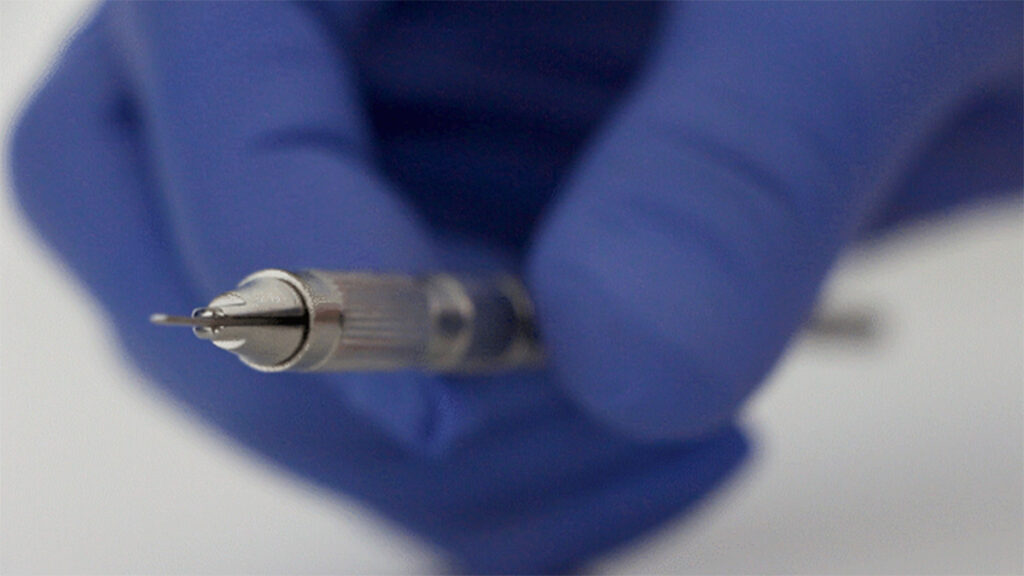
The Donor Area
When harvesting hair for your procedure we transfer hair from the donor area. This section is located at the back of the head, above the neck. Although it is possible to transplant hair from the body or face this is not recommended. For hair transplants to the top or front of your head it is important to match the grafts as closely to the original hair as possible.
Does it Work?
The reason hair transplants from this area are successful is because the hair from the donor site are resistant to DHT (Dihydrotestosterone – a byproduct of testosterone). DHT is the primary cause for male pattern hair loss. When hair is transplanted from the back and sides to the bald area on the front or top of the scalp, the hair follicles maintain their original characteristics and will, continue to grow.
Once Transplanted, Do Grafts Grow Back?
Hair transplanted to the top or front of the head is permanent. The extracted hairs do not grow back.
The redistributed hair continues to grow in the new area to make sure the donor site is not visibly affected by the loss of grafts, Dr. Sharma spreads out his selection over a large area. The appearance of hair at the back is almost completely undetectable after a few weeks post procedure. Most men continue wearing their hair short after the recovery period.
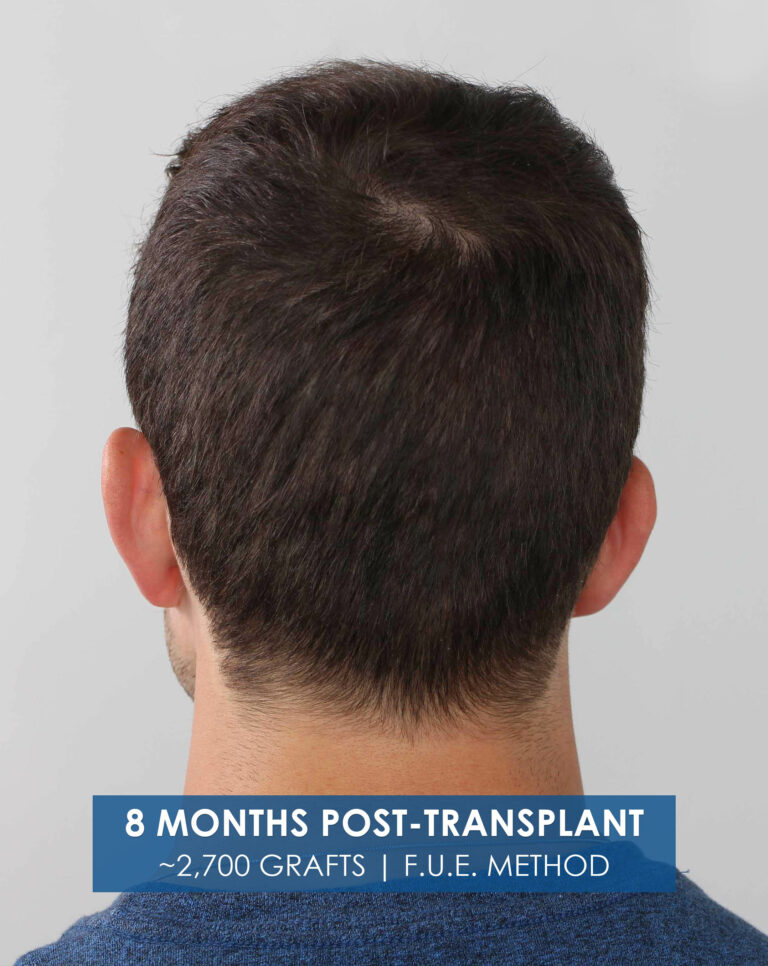
How to Disguise Your Hair Transplant
Female F.U.E. Concealment
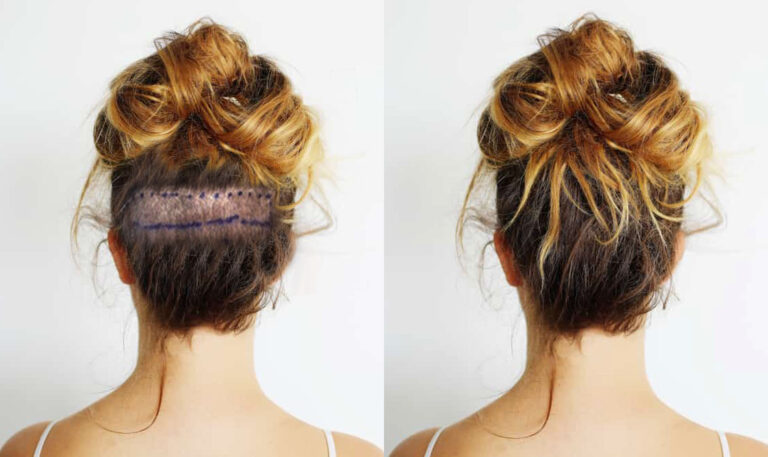
Long hair can assist to hide the donor site. Some women tie their hair into a bun to further conceal the area.
Male F.U.E. Concealment
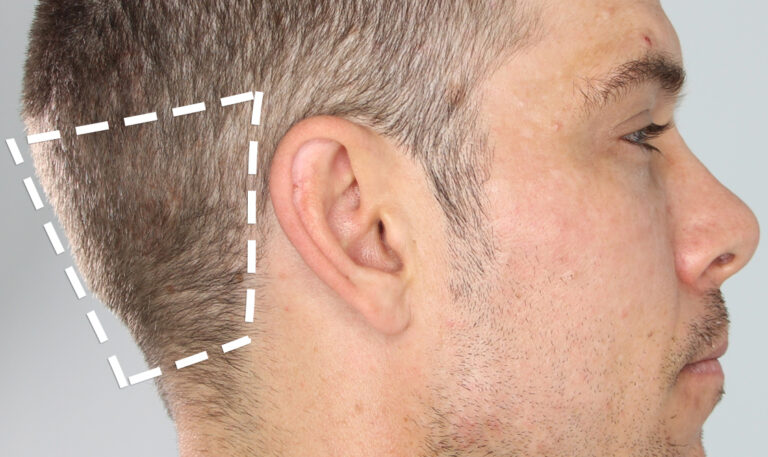
Even with short hair you can disguise the donor site. This patient is one-month post F.U.E. transplant of almost 2,000 grafts.
Hair Transplant FAQ
Understanding Your Hair Transplant Procedure
We have compiled some of our patient’s most frequently asked questions about the hair transplant process.
This primarily depends on the quality of hair on your donor site. You are required to have a certain amount of hair density at the back of your head so we can transfer it to the desired area. If you have a large demand for density or coverage at the front of your head, then you need a large amount of eligible donor grafts in the back.
Hair transplants are commonly charged per graft. More grafts does not always mean a better result. Placement, skill, and precision are huge factors in your end result. Our Hair Transplants start at $6,000. You can view our handy pricing guide here.
The cost of a hair transplant depends on the procedure type and the number of grafts transplanted. Dr. Sharma performs the procedures manually in order to ensure the most natural look possible. Hair transplant procedures generally start at $6,000.
This depends on the patients desired hair line and density. A lot of our patients only ever need one surgery but other will come back for a second one within their lifetime.
They are placed into a solution called HypoThermosol. This is formulated specifically to support tissue samples during hypothermic storage.
We will need the donor and recipient site shaved down to a zero for the surgery. You may have this done prior to the procedure date or we can shave it on the day of surgery.
Book now
Talk to a Hair Transplant Expert in Edmonton, Alberta
Contact us for a free virtual hair loss consultation and get started on your transformation today.
